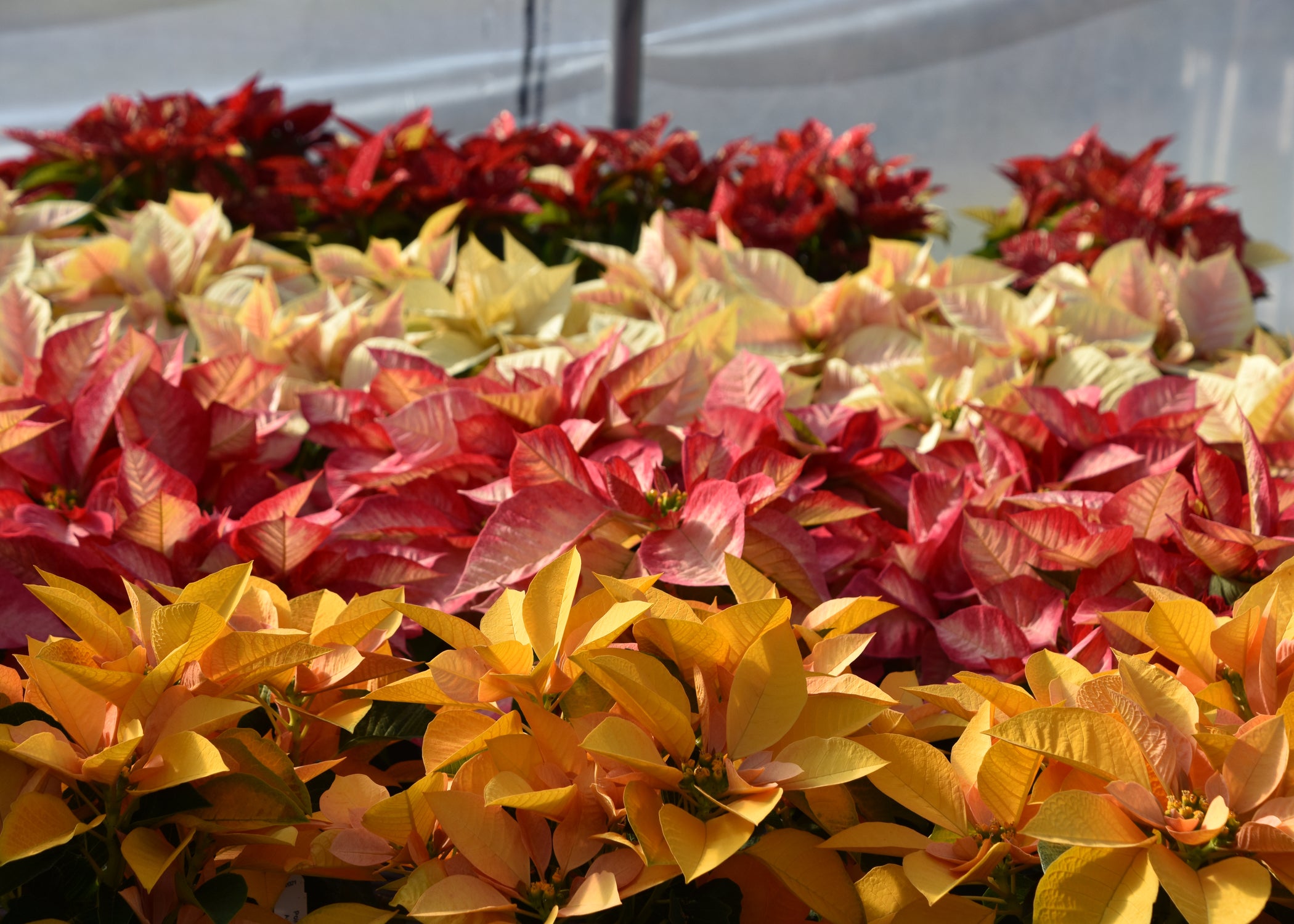Colorful poinsettias set holiday mood indoors
Published 2:52 pm Monday, December 6, 2021

- ROWS -- The South Mississippi Bracnch Experiment Station hosted a Poinsettia Open House with dozens of different poinsettia selections in their full, colorful glory for visitors to see. (Photo by MSU Extension/Gary Bachman) Alt text -- Yellow, pink, white and red poinsettias are displayed in rows.
By Gary R. Bachman
MSU Extension Service
This is one of my favorite seasons — but aren’t they all? — for enjoying my membership in the horticulture community.
Last week, Mississippi State University hosted the first of what we hope will be an annual Poinsettia Open House at the South Mississippi Branch Experiment Station in Poplarville. There were 37 or 38 different poinsettia selections in their full, colorful glory for visitors to see.
The greenhouse was stunning! The range of colors included red, pink, white and the nontraditional holiday colors of yellow and orange. Also mixed in were speckled, marbled and variegated selections.
It was interesting talking to everyone and asking what they’re favorites were. Of course, it was a mixed bag of results. While many like the interesting, novelty colors and forms, the majority also like the traditional red selections.
This is no surprise, as red poinsettias make up about 75 percent of sales nationwide in the U.S.
Many of our visitors asked about poinsettias being poisonous to pets. This is one of those urban legends that refuses to die.
The myth of poinsettias being poisonous can be traced back to 1919 when it was reported, though never confirmed, that a small child died after chewing on a poinsettia leaf. This misinformation spread faster and has been more long-lived than anything passed along on social media.
The truth of the matter was settled back in 1971 when researchers at my alma mater, The Ohio State University, reported findings that showed no mortality and no symptoms of toxicity within their test rats.
They speculated that a 50-pound child would have to consume 500 poinsettia leaves for it to be a problem. But this consumption would be self-limiting, as poinsettia leaves taste awful. I have tasted a poinsettia leaf in the name of science, and I can confirm their awful taste.
The American Society for the Prevention of Cruelty to Animals’ pet poison website details that poinsettias are not poisonous to our pets, but they can cause gastrointestinal symptoms. If you’re still worried, just keep your beautiful poinsettias out of the reach of the fur babies.
The latex sap from these ornamentals is more likely to cause humans some contact dermatitis, especially to those with latex allergies. So always wash your hands after handling a poinsettia.
Now for some poinsettia trivia.
Did you know that the poinsettia’s color is not its flowers? The color actually comes from modified leaf structures called bracts. Poinsettia flowers are small, pea-shaped buds called cyathia, which are clustered in the center. For the longest decorating enjoyment, look for plants where the cyathia haven’t started to open.
Poinsettias account for about 25 percent of all sales of potted flowering plants. In 2017, over 35 million poinsettias were sold. I personally think this number is too low and that more poinsettias were actually purchased.
In their native Mexico, poinsettias are called Flores de Noche Buena, Flowers of the Holy Night.
So, if you have already brought home some of these beauties, or plan to do so shortly, here are some tips to keep your poinsettia happy for the holidays.
Poinsettias need at least six hours of indirect sunlight and comfortable room temperatures. If you’re comfortable, then the poinsettias will be happy in your space. Protect them from temperature changes caused by cold or warm drafts, as either will cause the leaves and bracts to drop.
Poinsettias are sensitive to wet feet, so don’t overwater your plants.
Remove the decorative sleeve and water them in the sink, letting the pots completely drain. You can put the decorative sleeve back on after the plant has drained. Use a protective saucer to protect furniture from developing a water ring.
Visit your local, independent garden center and take a couple — or a dozen — poinsettias home with you for the holidays.


